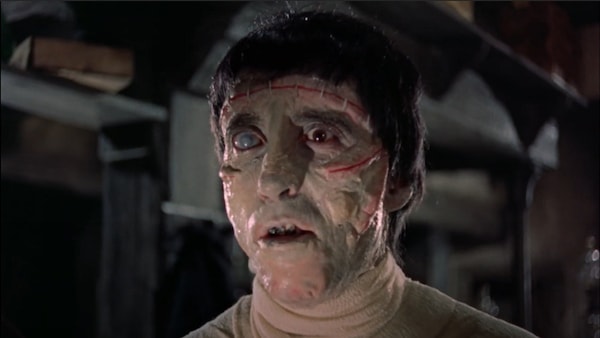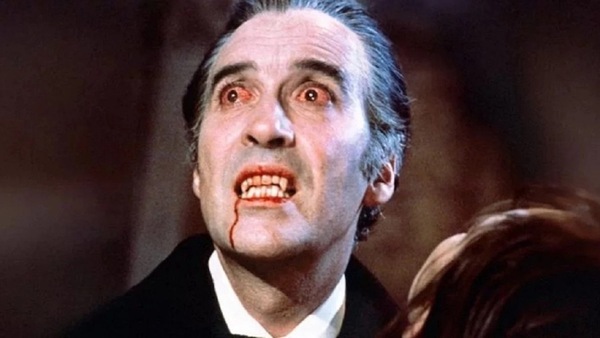Newsletter | Horror's Hall Of Fame: How Hammer Wielded Its Classic Monsters
This is #HouseOfHorrors, where Prahlad Srihari compiles the definitive guide on the modern production houses that comprise the genre's hall of fame.

Last Updated: 11.33 AM, Jun 13, 2023
This column was originally published as part of our newsletter The Daily Show on June 13, 2023. Sign up here. (We're awesome about not spamming your inbox!)
***
This is OTTplay’s House Of Horrors, an 8-part guide to the eight contemporary production houses that have cemented their spots in the genre’s hall of fame. In part 6, we look at Hammer Films. Also read the previous instalments on Blumhouse, A24, Platinum Dunes, IFC Midnight and NEON.
What is Hammer?
“Hammer Horror, Hammer Horror, won’t leave it alone. The first time in my life I keep the lights on to ease my soul,” sang Kate Bush in a 1978 track inspired by the British studio whose name was synonymous with lurid Gothic shockers between the late 1950s and the mid-1970s. Hammer Films didn’t start off as a horror studio though. In 1934, jeweller-comedian-entrepreneur William Hinds founded a scrappy production company (Hammer) whose movies were distributed by the company (Exclusive) he co-founded with theatre owner Enrique Carreras. Bankruptcy however forced Hammer to shut up shop within three years. Exclusive, which had even survived the Second World War, revived Hammer as a production offshoot to fill British screens with “quota quickies”: inexpensive movies made with government support to compete with Hollywood.
But Hammer’s first foray into horror wouldn’t come until 1956, when under the reign of sons James Carreras and Anthony Hinds, an adaptation of the BBC serial The Quatermass Xperiment became a breakout hit. Recognising the built-in audiences of horror properties, the studio began to produce its own takes on classics of the genre — the Draculas, the Frankensteins, the Mummies — as Universal had done before, but only more camp. Many of these movies, which starred the likes of Peter Cushing, Christopher Lee and Ingrid Pitt, are now cult classics.

Returns began to diminish once gothic horror went out of fashion — and in came slashers and exploitation flicks. Hammer couldn’t adapt and ceased production. Until the studio got a third lease of life in 2007 when Endemol founder John de Mol bought the studio and resurrected it from its grave. Nu-Hammer continues to cater to horror audiences. But the only noteworthy release so far may have been Let Me In (2010), the American adaptation of the John Ajvide Lindqvist novel Let the Right One In. Other movies that have been released under the Hammer imprint in the last 15 years include The Resident (2011), The Woman in Black (2012), The Quiet Ones (2014), and The Lodge (2019).
What is Hammer known for?
As much an institution as an imprint, Hammer brought into vogue a very distinct flavour of gothic horror with eye-popping Technicolor and eerie atmosphere.
The horror movies made by Hammer pushed the Classic Monsters of Universal into a bold new realm of eroticism and violence that sure would have tested the limits of the censors during Hays Code-era Hollywood. Hammer had nowhere close to the kind of budgets and resources that the big American studios had. But it recognised the audience’s appetite for subversive titillation — and capitalised on that. Oakley Court, the Victorian gothic country house on the banks of the River Thames that was its base of operations between 1951 and 1966, became an ideal set for many of its movies.
The Quatermass Xperiment (1955) did well enough in the UK. But Hammer’s first big hit to taste some success in the US was The Curse of Frankenstein (1957), in which Cushing and Lee played Baron Victor Frankenstein and his Monster respectively. The duo were part of a recognisable stable of actors who provided the Hammer joints a sense of continuity. Cushing and Lee also went on to appear in the Dracula cycle as Dr Van Helsing and Count Dracula. Costumes, visuals, stories, crewmembers — everything was recycled to maximise profits. Quality no doubt began to suffer with each entry in the Hammer Cinematic Universe. Audiences grew jaded on reaching a point of over-saturation, sending the studio into an early grave. Marvel and DC — take note.

What are the hallmarks of Hammer’s horror productions?
Foreboding castles perched atop a hill; swirling morning mist; lush woods; hidden tunnels; perversely red blood; damsels in low-cut, see-through nightgowns; and nights that looked like afternoons. To enjoy Hammer films is to embrace their stylised unnaturalism: a pronounced feeling of stagey extravagance. Another key element of their aesthetic sameness was the easily identifiable angular melodies of frequent composer James Bernard which punctuated the gothic mood. Depending on your mileage, the hallmarks of the genre could either be an incentive or a deterrent.
Hammer competed with Universal by building its own monster pantheon, with seven Frankensteins, more than a dozen vampire movies, four Mummy movies and a lone werewolf movie. The studio produced a zombie movie called The Plague of the Zombies two years prior to George Romero’s seminal classic, Night of the Living Dead. It had its own interpretations of The Hound of the Baskervilles and Dr Jekyll and Mr Hyde (The Two Faces of Dr Jekyll and Dr Jekyll and Sister Hyde). These movies depicted conflicts between faith and forces of nature, the struggle to reconcile old and new belief systems, science going horribly wrong, and transgressive figures challenging gender norms, sexual repression and bourgeois morality.

Who are the directors and actors Hammer worked with?
Director Terence Fisher and writer Jimmy Sangster were responsible for putting Hammer on the map with early hits like The Curse of Frankenstein and Dracula. But the faces of the studio were undeniably the star duo of Peter Cushing and Christopher Lee. Cushing as Baron Frankenstein cut a far more complex and dynamic figure than his counterpart in the Universal movie. Lee’s interpretation of Count Dracula deviated from that of Bela Lugosi’s, redefining the vampire as a more virile creature affecting a human façade. Other notable actors in the studio’s stable of talent included Ingrid Pitt, Oliver Reed, Ralph Bates, Michael Gough, André Morell, Madeline Smith and Barbara Shelley. Upon reaching the twilight years of their careers, Hollywood veterans Joan Fontaine (The Witches) and Bette Davis (The Nanny, The Anniversary) too appeared in Hammer joints.
Which are the essential Hammer horror movies?
The Curse of Frankenstein (1957), Dracula (1958), The Mummy (1959), The Brides of Dracula (1960), Taste of Fear (1961), The Curse of the Werewolf (1961), The Abominable Snowman (1962), The Plague of the Zombies (1966), Quatermass and the Pit (1967), The Devil Rides Out (1968), The Vampire Lovers (1970), Dr Jekyll & Sister Hyde (1971), Twins of Evil (1971), Captain Kronos – Vampire Hunter (1974), Let Me In (2010)
STREAM NOW: Let Me In | Woman In Black | The Resident | The Quiet Ones
